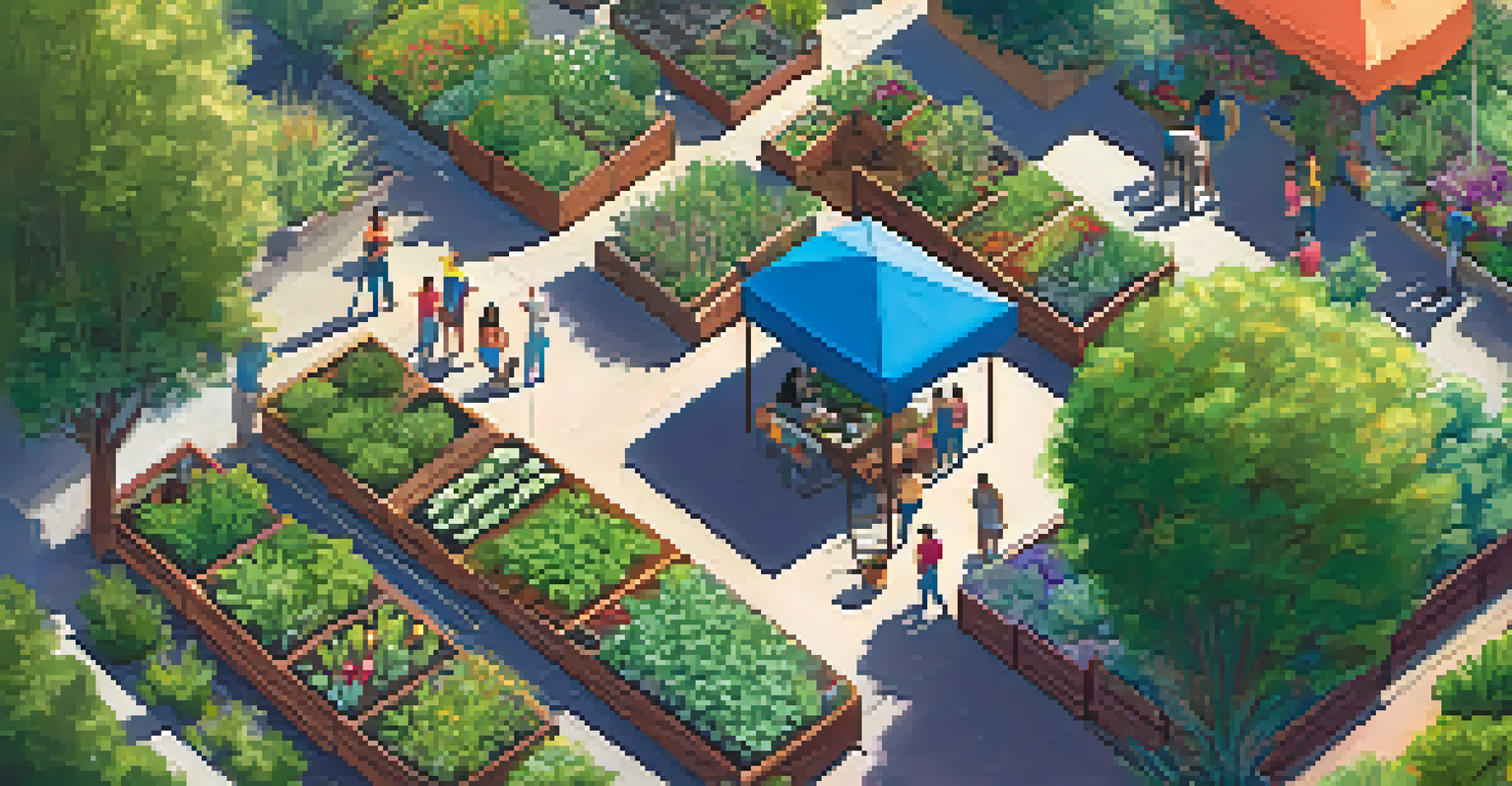How Grassroots Movements are Shaping Los Angeles Communities

Understanding Grassroots Movements in Los Angeles
Grassroots movements are community-led initiatives that arise from local needs and concerns. In Los Angeles, these movements often focus on social justice, environmental issues, and community empowerment. They thrive on the idea that change can originate from the ground up, rather than through traditional political channels.
The power of the people is greater than the people in power.
These movements typically involve everyday citizens coming together to address issues affecting their neighborhoods. For example, residents might unite to tackle rising housing costs or advocate for better public transportation. This community-driven approach fosters a sense of ownership and accountability among participants.
In a city as diverse as Los Angeles, grassroots movements reflect the unique challenges and aspirations of various communities. By amplifying local voices, these initiatives not only address immediate concerns but also build long-lasting relationships among residents.
Key Issues Addressed by Grassroots Movements
One of the most pressing issues tackled by grassroots movements in LA is housing affordability. Groups like the Los Angeles Tenants Union have emerged to fight for renters' rights and advocate against unjust evictions. Their efforts help create a more equitable housing landscape for all residents.

Environmental justice is another critical area of focus. Movements such as the South Central Farmers have worked tirelessly to promote sustainable agriculture and access to fresh food in underserved neighborhoods. These initiatives not only improve health outcomes but also empower communities to take charge of their local environments.
Grassroots Movements Empower Communities
Grassroots movements in Los Angeles enable residents to address local issues like housing and environmental justice through community-driven initiatives.
Additionally, grassroots movements often advocate for racial and social justice. Organizations like Black Lives Matter Los Angeles highlight systemic inequalities and push for policy changes that promote equity. By addressing these issues, they inspire community members to engage in activism and create a more just society.
The Role of Social Media in Mobilizing Communities
In today’s digital age, social media plays a pivotal role in mobilizing grassroots movements. Platforms like Twitter and Instagram allow activists to reach a broader audience quickly and efficiently. By sharing stories, events, and calls to action, they create a sense of urgency and foster solidarity among supporters.
Activism is the rent I pay for living on this planet.
For instance, hashtags can unify various movements under a common banner, making it easier for individuals to find and join causes that resonate with them. This virtual connectivity often translates into real-life action, such as protests or community meetings, where people come together to effect change.
Moreover, social media can amplify marginalized voices that might otherwise go unheard. By providing a platform for these communities, grassroots movements can challenge dominant narratives and promote a more inclusive dialogue on important issues facing Los Angeles.
Building Community Through Grassroots Activism
Grassroots movements foster a strong sense of community among participants. When individuals come together to address common challenges, they build relationships that extend beyond activism. This camaraderie can lead to lasting friendships and a stronger support network, enhancing overall community resilience.
For example, local organizations often host workshops, training sessions, and social events to engage residents and promote skill-sharing. These gatherings not only educate participants but also create bonds that strengthen the fabric of the community. People begin to see their neighbors as allies in the fight for a better future.
Social Media Boosts Activism Efforts
Social media platforms play a crucial role in mobilizing grassroots movements by uniting supporters and amplifying marginalized voices.
Ultimately, the connections formed through grassroots activism can lead to a more cohesive and engaged community. When residents feel empowered and supported, they are more likely to take ownership of their neighborhoods and advocate for positive change on an ongoing basis.
Challenges Facing Grassroots Movements in LA
Despite their impact, grassroots movements in Los Angeles face several challenges. One major obstacle is funding; many initiatives rely on donations and volunteer efforts, which can limit their reach and sustainability. Securing consistent financial support is crucial for these movements to continue their work effectively.
Additionally, navigating the political landscape can be daunting. Grassroots organizations often confront bureaucratic hurdles when trying to implement changes or advocate for policy reforms. This can lead to frustration and disillusionment among community members, who may feel that their voices are not being heard.
Finally, internal conflicts can also arise within movements, particularly as diverse groups come together with varying perspectives and priorities. Open communication and a shared vision are essential for maintaining unity and focus in the face of these challenges.
Success Stories: Grassroots Movements Making a Difference
There are numerous success stories that showcase the power of grassroots movements in Los Angeles. One notable example is the Eastside Cafe, a community space that emerged from a grassroots effort to provide resources and support for local residents. Today, it serves as a hub for organizing, education, and cultural events.
Another compelling success is the Clean Up Green Up initiative, which empowers communities in low-income areas to advocate for environmental justice. By working together, residents have successfully pushed for cleaner air, improved access to green spaces, and greater accountability from local industries.
Challenges Affect Grassroots Success
Despite their impact, grassroots movements face challenges such as funding limitations and bureaucratic hurdles that can hinder their efforts.
These examples illustrate that when communities unite around common goals, they can effect significant change. Grassroots movements not only address immediate issues but also inspire hope and resilience among those they serve.
The Future of Grassroots Movements in Los Angeles
As Los Angeles continues to evolve, grassroots movements will likely play an increasingly vital role in shaping the city's future. With growing awareness of social and environmental issues, more residents are becoming engaged in activism and community organizing. This trend bodes well for fostering a more equitable and sustainable city.
Moreover, the rise of technology and social media will continue to enhance the capabilities of grassroots movements. As communities harness these tools to connect and mobilize, they can amplify their voices and impact even further. The potential for collaboration across diverse groups offers exciting possibilities for collective action.

In conclusion, grassroots movements are integral to the ongoing transformation of Los Angeles communities. By empowering residents, addressing pressing issues, and fostering connections, these initiatives are paving the way for a brighter future for all Angelenos.